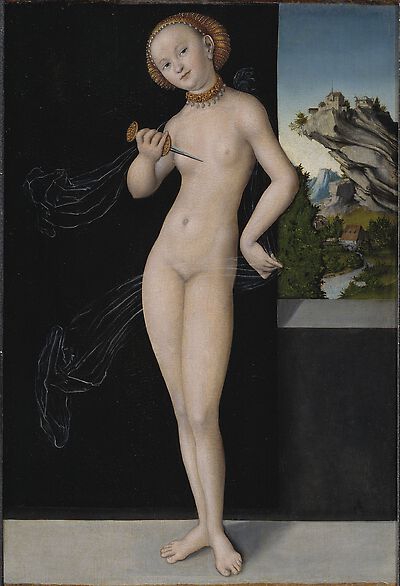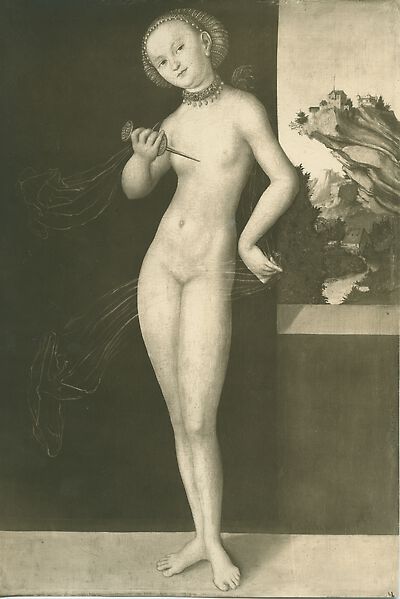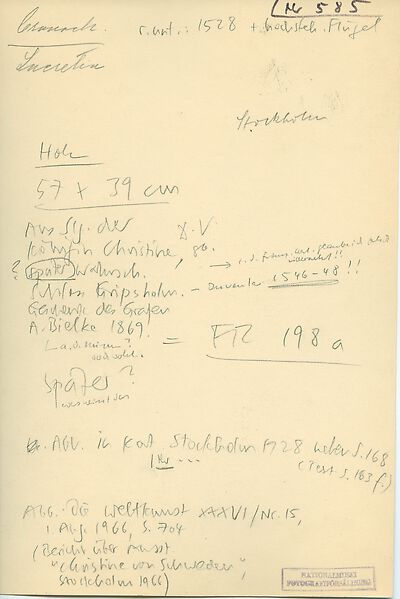The painting depicts Lucretia as a full-length standing nude with a view of a landscape in the background.
Her head is inclined slightly to the left and she looks at the viewer. With her raised, right hand she presses the short dagger against her chest just below her breasts. Her
The painting depicts Lucretia as a full-length standing nude with a view of a landscape in the background.
Her head is inclined slightly to the left and she looks at the viewer. With her raised, right hand she presses the short dagger against her chest just below her breasts. Her left hand elegantly holds the transparent veil, which covers her shoulder. A soft breeze has blown it to the left of the painting so that it covers but does not hide her vulva. The only piece of jewellery she wears is a neckband decorated with pearls and her hair is pinned up beneath a net bonnet with pearls.
The background is dark, but a window on the left side of the painting indicates that Lucretia is standing in a room. A wooded landscape with a river, two buildings and mountains is visible through the window.
According to the legend Lucretia lived in the 6th century BC and was the beautiful and virtuous wife of the roman Collatinus. The roman King's son - Sextus Tarquinius fell in love with her. During a stay in her house Sextus threatened to kill her and shame her honour if she did not surrender to him. After the rape Lucretia had her father and husband vow vengeance and then she stabbed herself. The event led to an uprising in which the royal family was overthrown and the Roman Empire became a Republic.
Depictions of Lucretia who was seen as the epitomy of female virtue, chastity, fidelity and honour enjoyed great popularity, particularly in the 16th century.
[Literature: Bierende 2002, Follak 2002, Livius 1909]


